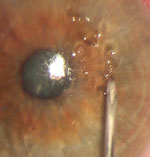The physiology of anabolic / androgenic steroids is a complex topic. An exact description of all biochemical processes occurring in the human body when taking steroids is impossible. Nevertheless, we would like to give the reader a general overview of these processes, since some of their knowledge and understanding is essential. Because the athlete is always interested only in stimulating the attainment of steroid qualities; we want to talk in this chapter mainly about their effects on the muscle cell.

Star investigation: Ottawa refuses to say whether drug-tainted horse meat entered food chain
Steroids are either administered intramuscularly or taken orally. When injected, the substance enters directly into the blood, in the form of a pill goes through the gastrointestinal tract to the liver, where it is either completely or partially destroyed or enters the blood in its original state. Accepted steroid enters the blood in the form of numerous steroid molecules that move along the bloodstream throughout the body. Each steroid molecule carries the information that it must transmit to certain cellular bodies. The cells provided for this have different types of receptors on their outer membrane. One of them is a steroid receptor, which is found in large quantities in muscle cells. Steroid receptors and steroid molecules are the same size and shape: they fit together like a key to a lock. The steroid receptor takes a steroid molecule, passing all other types of molecules past. The same happens with other types of receptors that do not perceive steroid molecules, because intended only for "their" molecules. When the steroid receptor and the steroid molecule combine into a complex, the molecule is capable of transmitting information to the muscle cell. It should be noted that the majority of steroid molecules in the blood are bound, forming compounds with proteins: sex hormone binding globulin. This means that 98% of the steroid molecules in the blood are bound and only 1-2% in the free state. The latter are precisely related to steroid molecules capable of forming a steroid-receptor complex. Related steroid molecules are the passive part, since in such a state, a muscle cell will not perceive them. For the sake of accuracy, we say that this percentage varies were to buy steroids online.
The Right Way To Diet To Lose Fat And Maintain Muscle
The formed steroid receptor complex is directed to the cell nucleus, where it joins certain segments on DNA nucleic acid segments (dysoribonucleic acids). Then the transcription follows, i.e. DNA is imprinted. The resulting ribonucleic acid leaves the cell nucleus and in the cytoplasm joins the RNA located here, where by means of translation there is an increase in protein synthesis. In combination with intense anabolic workouts with weight lifting, this leads to a transverse increase in muscle cells (muscle hypertrophy). Enhanced protein synthesis is considered to be the main effect of steroids on the muscle cell, while steroid molecules also carry other important information for athletes. A lot of things speak in favor of the fact that steroids also have a strong anti-catabolic effect. Thanks to them, the percentage of protein degraded in the muscle cell is reduced. In addition, steroid molecules block cortisol receptors located on the membrane of the muscle cell. And the body's cortisol, a strong catabolic hormone, loses its ability and the muscle cell does not lose protein.

A’s Trade All-Star Yonder Alonso To Mariners For Their Own Dang Prospect
Another advantage of steroids is that they increase creatine phosphate (CF) synthesis in the muscle cell. CF plays a crucial role in the restoration of adenosine triphosphate (ATP). ATP is a prerequisite for all muscle movements, because is a combustible material required by the cage to perform work. ATP accumulates in the muscle cell and, if required, is converted into adenosine diphosphate. This process releases energy that allows the muscle cell to work. KF is also required for the reverse process of ADP in ATP. The more of it, the faster this recovery goes and the more ATP is at the disposal of the muscle cell. In practice, this means that the muscle becomes stronger, but not more. Anyone who has ever used a steroid "Oxandrolone", knows that this drug affects mainly muscle strength. The fact is that it causes an increased KF synthesis in the muscle cell. Another factor that is beneficial to athletes is that steroids accumulate carbohydrates in the form of glycogen in the muscle cell. This how to buy testosterone online process goes along with the increased accumulation of fluid, which, together with the increased volume of the muscle, entails an improvement in the endurance of the muscles, as well as an enhanced surge of strength. Steroids reduce the production of endogenous insulin, because a muscle cell can, with their intake, absorb nutrients (carbohydrates in the form of glycogen and protein in the form of amino acids) to a lesser extent depending on insulin. This gives athletes the opportunity to reduce the percentage of fat and improve muscle hardness, because Insulin, along with its high-potency anabolic hormone quality, turns glucose into glycerol and, ultimately, into triglyceride, which leads to the growth of fat cells.
USADA suspends Jon Jones 15 months, but eligible to return in late October – The Breaking News Headlines
Who has ever tried steroids, knows that during a workout in the muscles involved is clearly observed "pump effect"which professionals call "steroid pamp" . The fact is that steroids increase blood volume and the number of red blood cells in the human body. Muscles become more voluminous. Along with these benefits, increased blood flow to the muscle cell increases the delivery of nutrients to it. Significantly high blood volume is provided by such androgenic steroids as Dianabol, Testosterone and, above all, Anadrol, which is partly expressed in the strong, even painful effect of the pump during exercise. Associated with this phenomenon of enhanced oxygen supply to the body, runners on average and short distances often use. After the steroid-receptor complex has fulfilled its duty in the nucleus of the cell, the steroid molecule returns to the bloodstream and either for some time becomes suitable for the function described above, or turns into an inactive molecule and is ultimately excreted from the body through urine. Not all steroid molecules in the blood immediately bind to the sex hormone binding globulin or are in a free, active state. Some of them are immediately used by the body in the process of metabolism and derived from it. Another part can be transformed by the body into female sex hormones – estrogen. This phenomenon is called aromatization and at first glance seems something unthinkable. But, if we consider the structure of the male sex hormone testosterone and the female Estradiol, it is striking where to buy prohormones after ban that they are very similar. The body easily copes with the task (development) of the necessary structural changes in the molecule by means of entsym. Some steroid molecules are converted, like separate endogenous and exogenous parts of testosterone, to dihydrotestosterone (DNT). It has a greater chemical affinity for muscle cell receptors than testosterone itself, and therefore muscle steroids for sale some experts believe that dihydrotestosterone is a more effective hormone in comparison with both male and female sex hormones, at the same time it also has a high binding potential in relation to receptors (of the thyroid gland) of the sebaceous glands and their hair follicles. Interestingly, it can not turn into estrogen. In the end, all these molecules are excreted from the body through urine.
Monday’s Sports Digest: Press Herald’s Mike Lowe named Maine Sportswriter of the Year
We are aware that when reading this chapter, one question or another remains unseen for you and that not everything has become immediately clear and understandable to you because of a pile of complex information. Nevertheless, the athlete should be given a certain view on the processes occurring in the human body when taking steroids so that the different qualities and types of effects of the preparations described below can be understood.
Rate of Drug-Free Muscle Gain
Description of individual drugs.
This chapter begins the practical part of the book. We have already tried to briefly describe, as far as possible, the subsequent topics. Special attention is paid here to a detailed, detailed description of anabolic / androgenic steroids and other pharmaceutical preparations used by athletes.

What the Dietary Supplement Industry Need to Know About Steroids
The medications listed are in alphabetical order. And since each active chemical substance is often present in many very different preparations, we, as a rule, give here the brand name of the preparation. In some exceptional cases, the very name of the chemical in the product is listed here in our alphabetical list. After the name of the drug itself is always indicated the active substance specified in the list of medication. Under the heading "trade names" A list of products sold in Europe that by all means contain the above-mentioned active chemical substance. In addition, the quantities of this substance in the preparation, the form of release, the names of the manufacturer and the country of the manufacturer are indicated. Then follows a detailed description of the drugs.
Despite Past, Josh Barnett Still One of the Best – Last Word on Sports
Contents
- Star investigation: Ottawa refuses to say whether drug-tainted horse meat entered food chain
- The Right Way To Diet To Lose Fat And Maintain Muscle
- A’s Trade All-Star Yonder Alonso To Mariners For Their Own Dang Prospect
- USADA suspends Jon Jones 15 months, but eligible to return in late October – The Breaking News Headlines
- Monday’s Sports Digest: Press Herald’s Mike Lowe named Maine Sportswriter of the Year
- Rate of Drug-Free Muscle Gain
- Description of individual drugs.
- What the Dietary Supplement Industry Need to Know About Steroids
- Despite Past, Josh Barnett Still One of the Best – Last Word on Sports